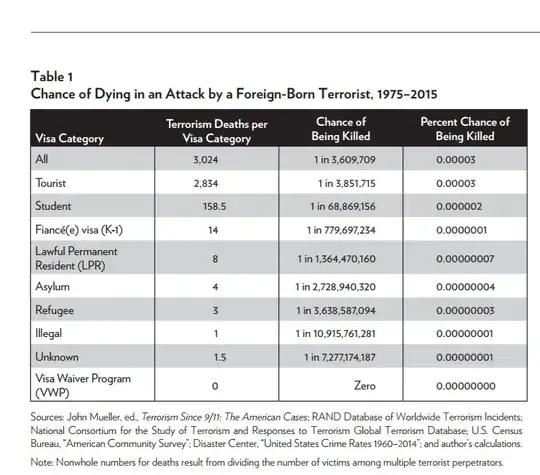The Financial Times did some analysis of Donald Trump's controversial immigration restrictions (which were claimed to be about protecting Americans from terrorism).
They focus on analysing risk from refugees since (my emphasis):
President Donald Trump will indefinitely block Syrian refugees from resettling in the US and will temporarily suspend the entire US refugee programme
They put the refugee issue in context:
Those resettling in the US are interviewed and screened for terrorism and crime links by several US agencies, including the National Counterterrorism Center, the FBI, the Department of Homeland Security and the State Department.
Mr Trump cited terrorism risks as his reason for limiting the number of refugees the US takes. However, since the US refugee programme began in 1975, more than 3.2m refugees have entered the US and only three have carried out a deadly terrorist attack.
The FT analysis includes the chart below:
They claim that Americans are more at risk from death caused by vending machines than death caused by terrorist attacks committed by refugees.
Are their estimates of the risks credible?

